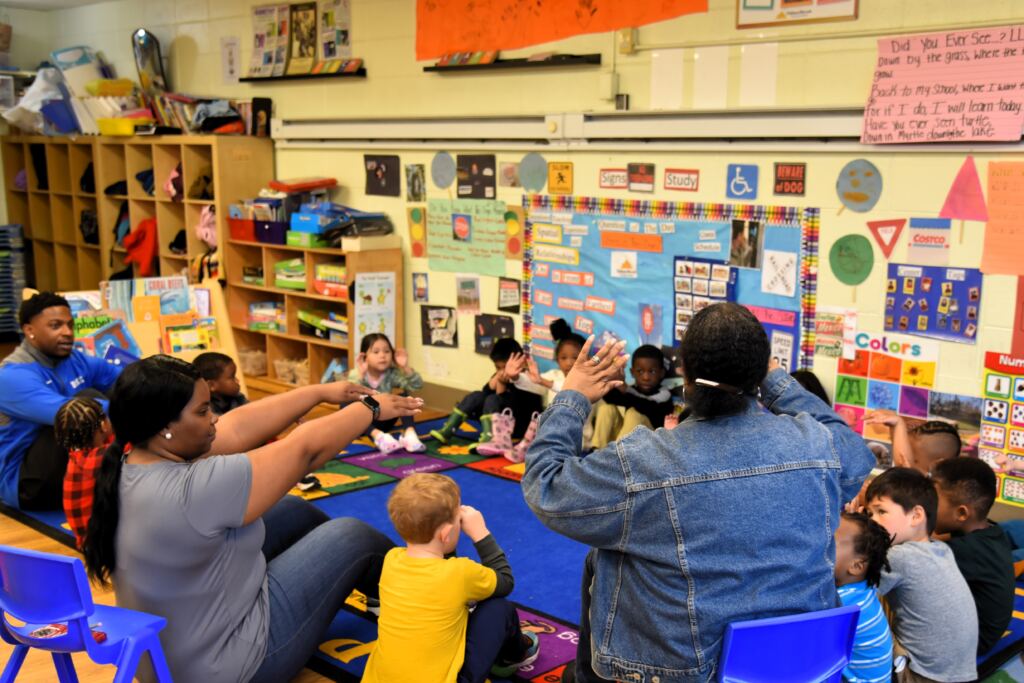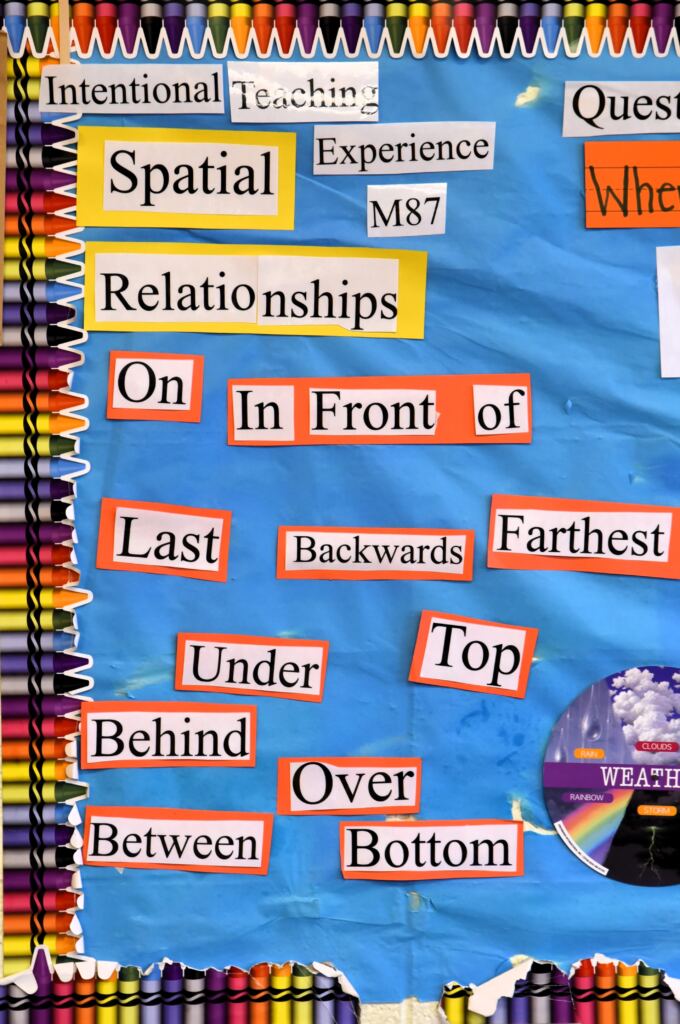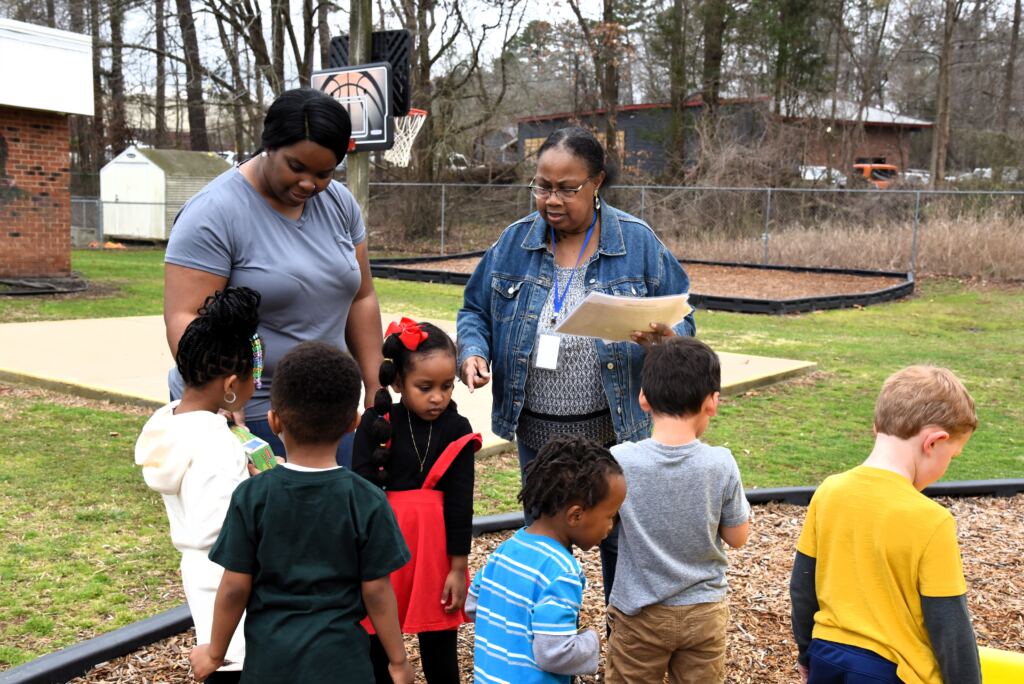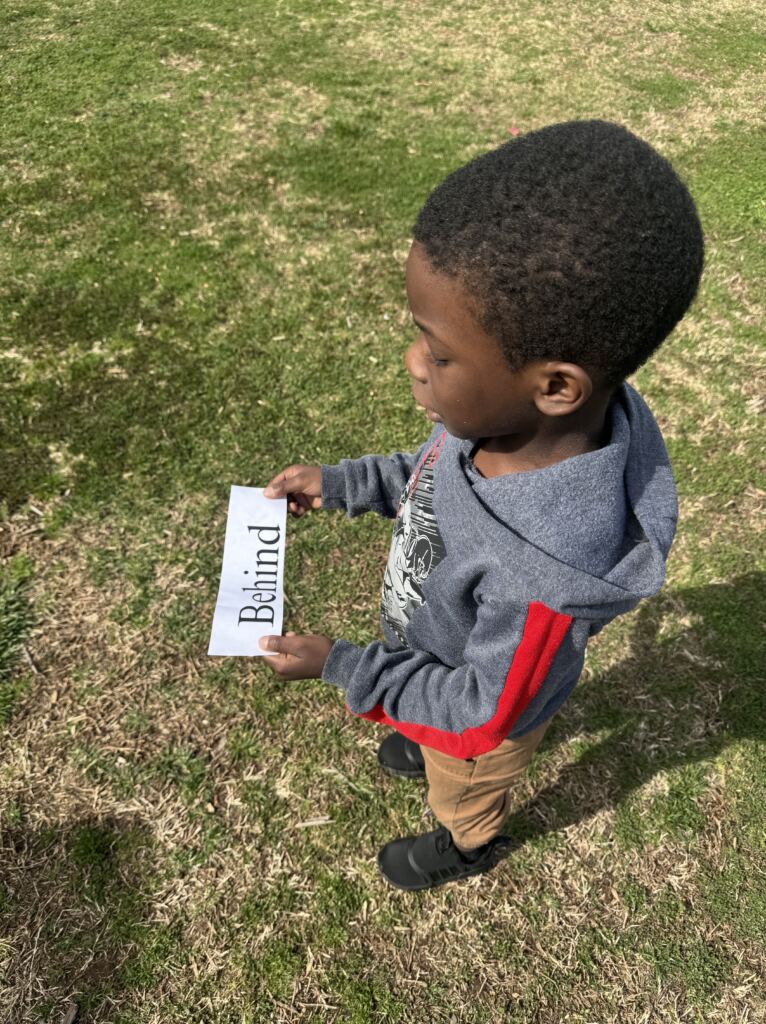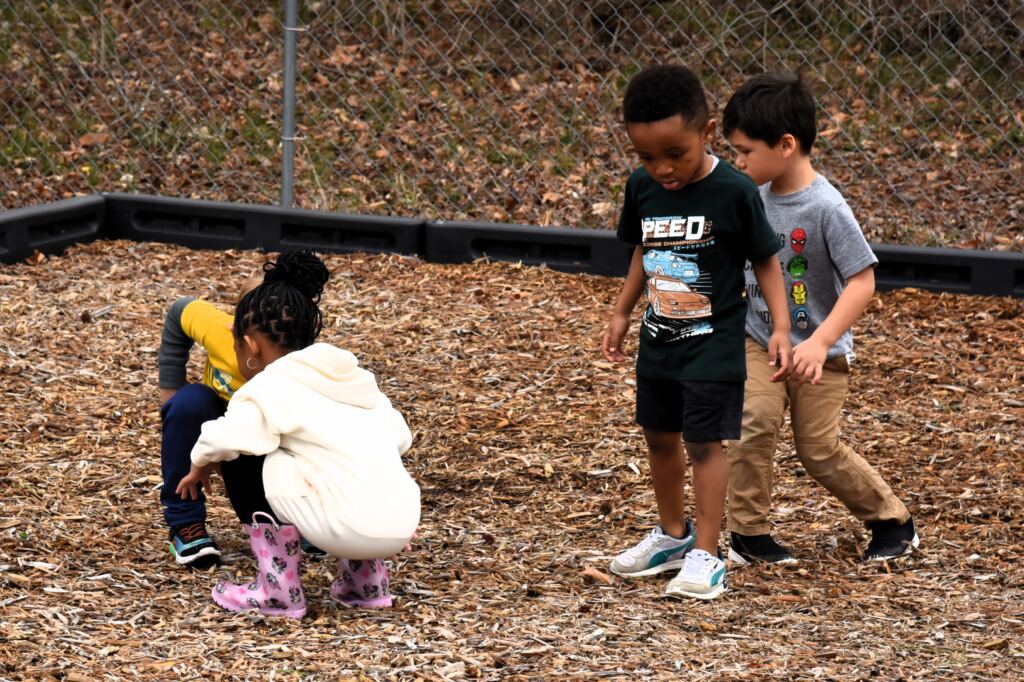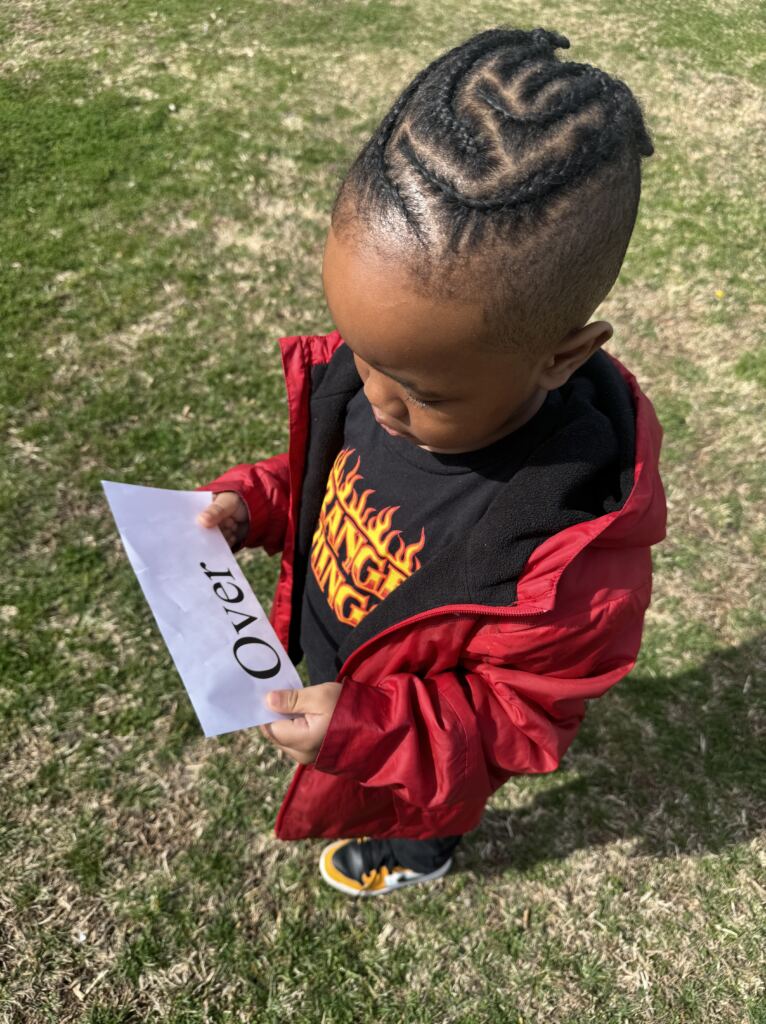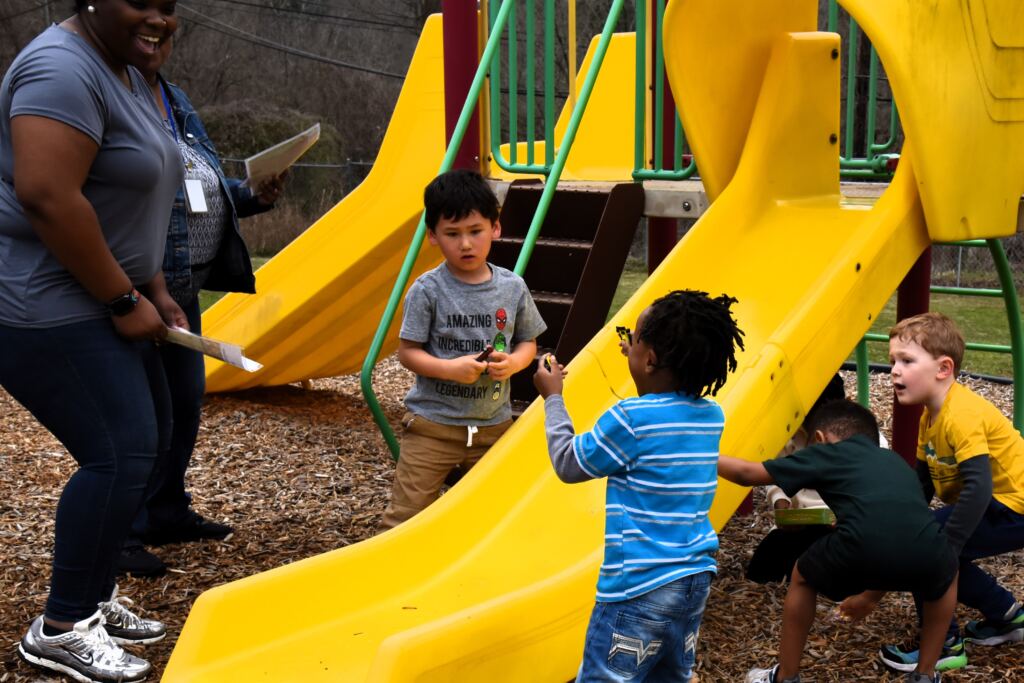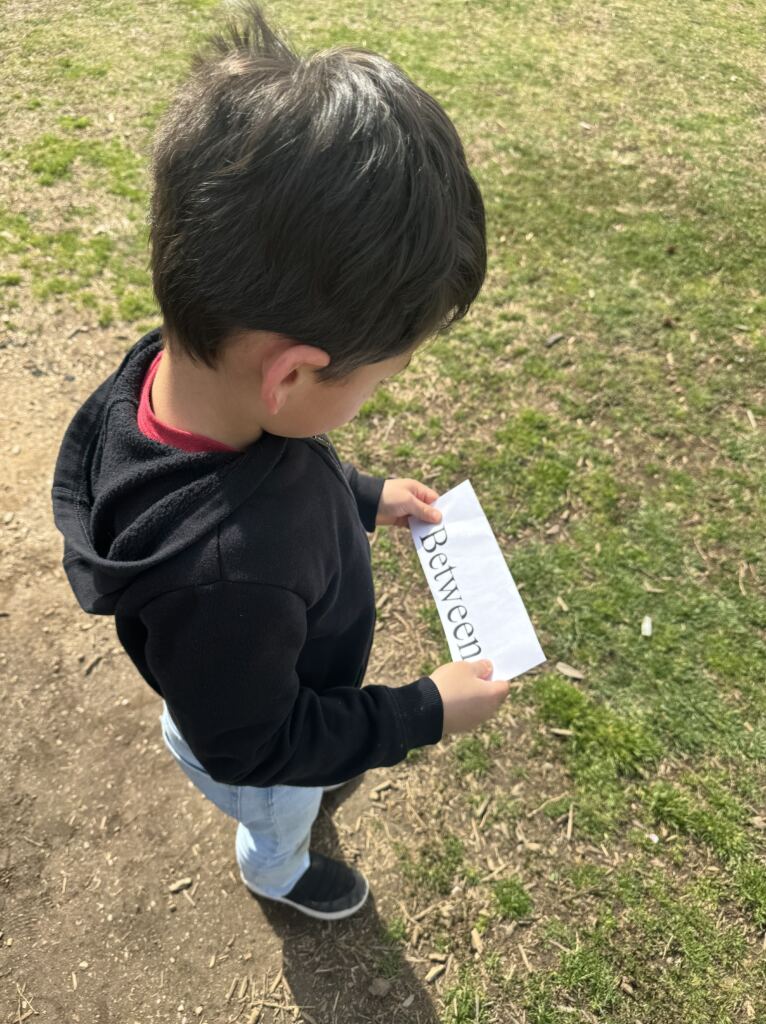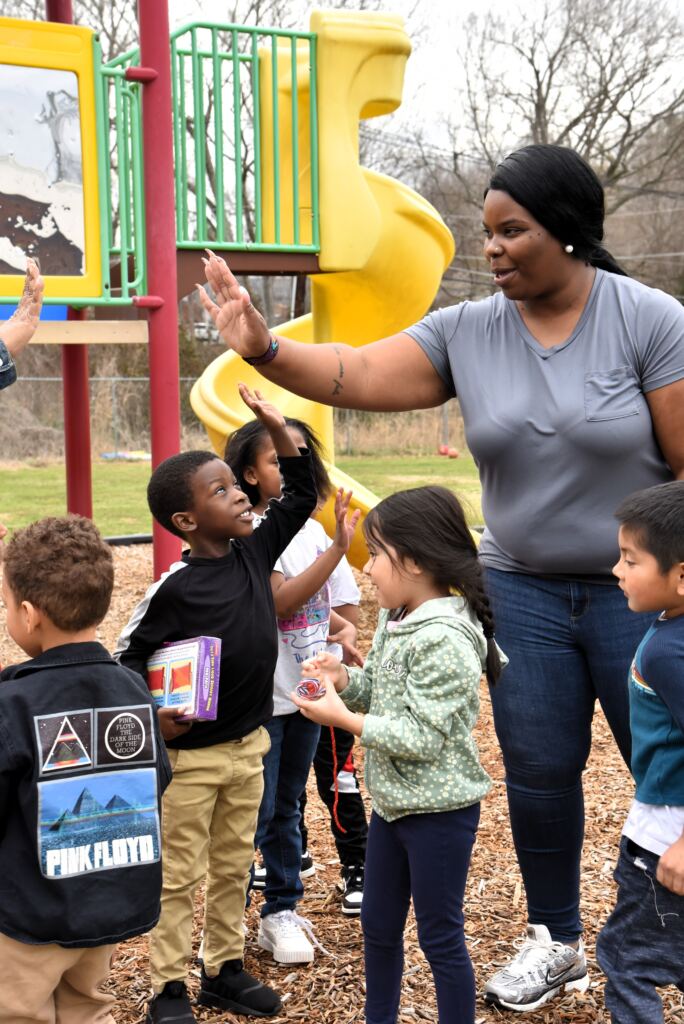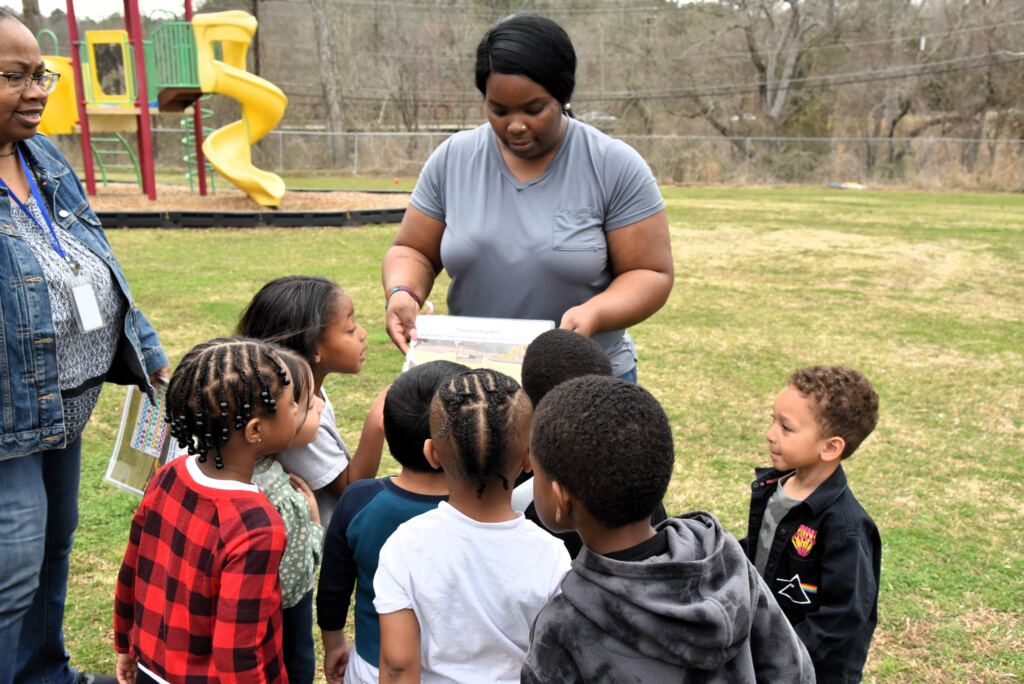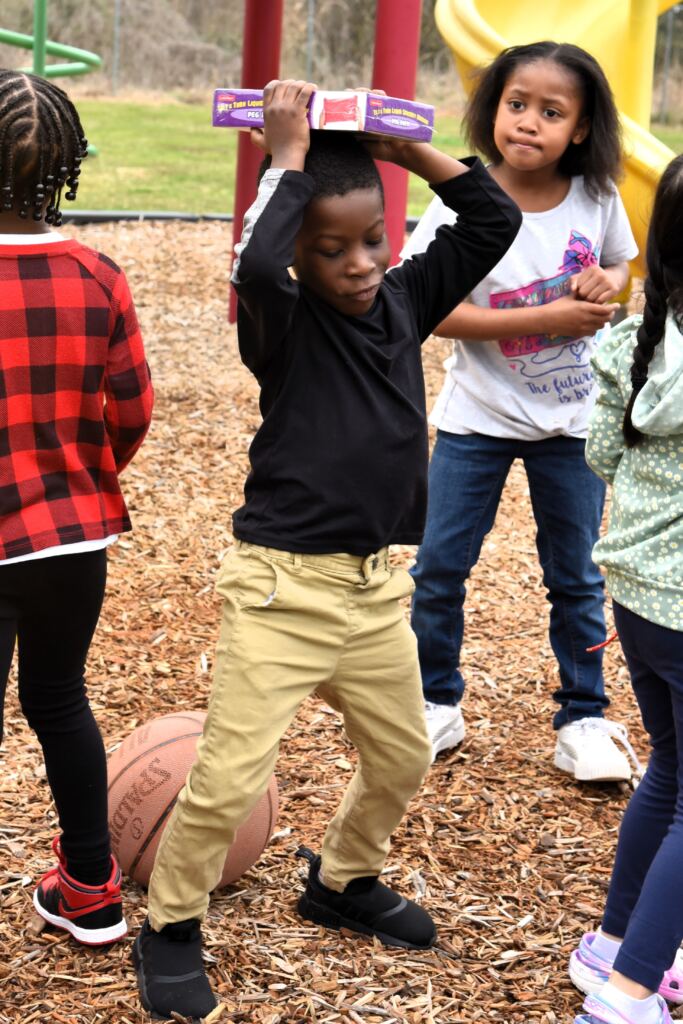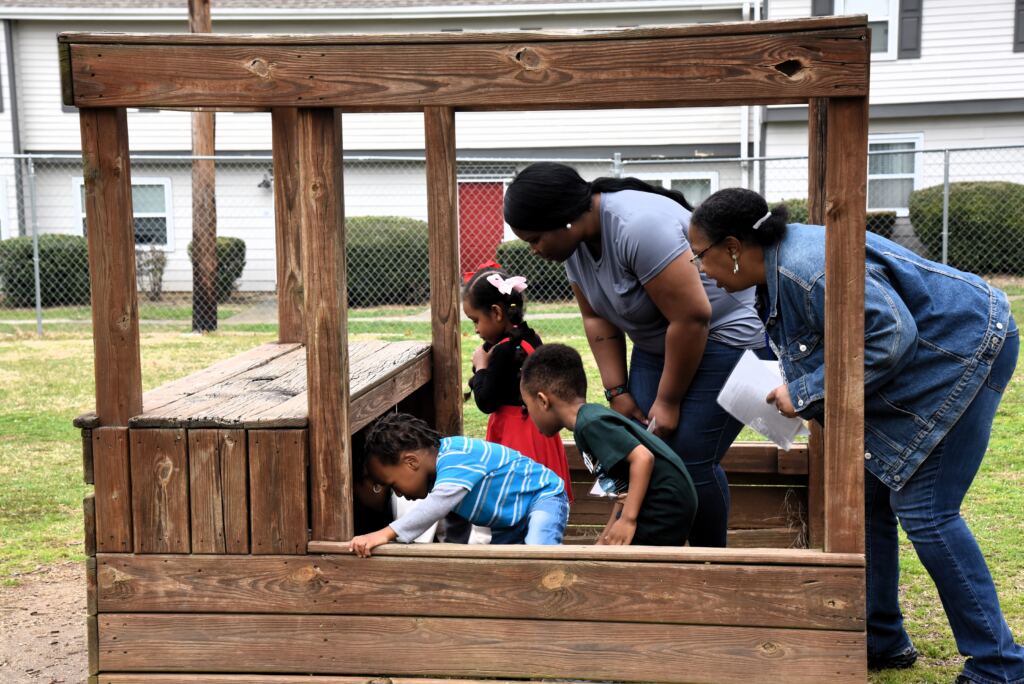Durham PreK Explores the Science of Play
March 27, 2024
On a clear, cool day in late February 2024, a dozen young Durham scientists working in groups combed through a grassy area scanning the ground, intent on their mission. They were looking for treasure. Together, they had spent the morning preparing for their search by reviewing maps marked with gold stars and honing their spatial relationship skills. Behind them, their Durham PreK teacher, Arianna Holoman, along with Nita McAdoo, Instructional Support Manager for Durham PreK, offered encouragement.
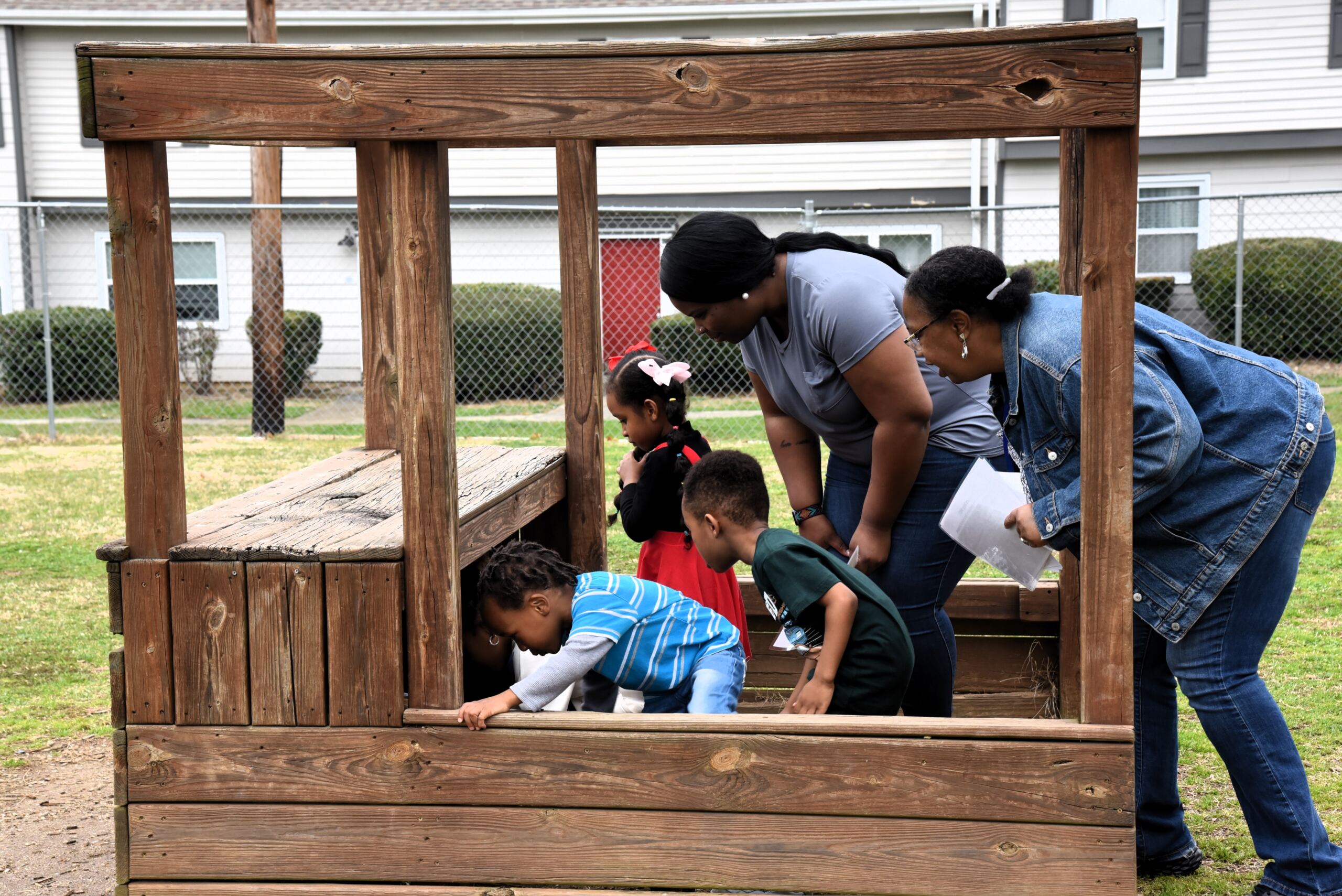
for preschoolers, an awareness or understanding of spatial concepts and relationships usually predicts later success in math, reading, and following directions.
Earlier that morning, Holoman and McAdoo had led these investigators in an activity called “Bridges and Tunnels,” designed to teach preschoolers the meaning and use of directional words – up/down, in/out, backward/forward, over/under. Holoman said this introduction to spatial concepts was meant to help the students, “use the positional words to figure out where the stuff was hidden, like underneath the box or inside the slide.” McAdoo added that, “for preschoolers, an awareness or understanding of spatial concepts and relationships usually predicts later success in math, reading, and following directions.”
Part of McAdoo’s role with Durham PreK is to model teaching practices and offer curriculum coaching and support for Durham PreK teachers. McAdoo’s visit to the Durham PreK classroom at Childcare Network on Rippling Stream Road that morning was part of a larger effort to extend lessons from a Durham PreK educator training received a few weeks earlier at the 2024 ASK Conference. The conference, hosted by Child Care Services Association, is an annual continuing education and professional development event for early childhood educators from around the state with a specific track for Durham PreK teachers to help classrooms and early educators meet the program’s enhanced quality standards.
The STEMI2E2 Center focuses its work on supporting early childhood educators and parents to engage young learners in science, technology, engineering, and mathematics (STEM) with a specific focus on adaptive learning environments that foster inclusion for children with disabilities.
At this year’s ASK Conference, the Durham PreK track featured training from researchers and technical assistance specialists at the federally funded STEM Innovation for Inclusion in Early Education Center, or STEMI2E2, housed at UNC Chapel Hill’s Frank Porter Graham Child Development Institute (FPG). The STEMI2E2 Center focuses its work on supporting early childhood educators and parents to engage young learners in science, technology, engineering, and mathematics (STEM) with a specific focus on adaptive learning environments that foster inclusion for children with disabilities.

During the ASK Conference, Chih-Ing Lim, the national STEMI2E2 Center’s Senior Technical Assistance Specialist, along with other Center staff, walked Durham PreK teachers through Learning Trajectories, a newer section of the site that contains instructional materials that “really focus on these foundational skills, developmental goals, and then instructional activities to scaffold children along their path,” says the STEMI2E2 Center’s Jessica Amsbury. With the first version of these newer materials added to the STEMI2E2 website, Lim said she and her team “jumped at the opportunity to really take it to a new level” by engaging with Durham PreK teachers as part of their professional development. Lim added, “We wanted to do this because [Durham PreK has] been so intentional about how they support the teachers thereafter. We knew that they would be going in to have conversations with the teachers and doing some follow up communities of practice.” It’s that follow-up that Lim feels “is missing from one-and-done workshops, so we were really excited to be part of this.” Amsbury adds that engaging with Durham PreK teachers around these materials offers a valuable opportunity to get perspective on how teachers use the materials and what else they may need to help children build their STEM skills.
We wanted to do this because [Durham PreK has] been so intentional about how they support the teachers thereafter. We knew that they would be going in to have conversations with the teachers and doing some follow up communities of practice.
Holomon and McAdoo report that those intrepid young scientists they work with found what they sought. To the casual observer, the preschoolers might have appeared simply to be having fun on a treasure hunt on their school playground. But thanks to the learning partnership with the STEMI2E2 Center, McAdoo, Holomon, and other Durham PreK teachers know that the magic of well-integrated STEM learning is that this casual observer would be right, even if they don’t yet recognize scientists at work.
